Intro
Two weeks ago I wrote this piece with some thoughts for folks who were pushed into buying backcountry gear by last year’s season-ending pandemic. So if you haven’t read that, now’s a great time! Last week Sklar wrote this excellent piece detailing some of the impacts COVID has had on the ski industry, with important takes from avalanche professionals and others. It provides more valuable context, and I highly recommend it.
Now I’m back with part two of my intro to backcountry skiing for the pandemically influenced skier. We’re going to cover some good ways to safely gather experience and knowledge, strategies for staying current and up to date, and finally, some notes for current backcountry skiers as we get ready for an influx of new faces in the mountains.
Getting Experience
There’s an old saying that the only experience prevents mistakes, and the only way to get experience is to make mistakes, and that rings very true in the backcountry. That said, the key is controlling where you make those mistakes, who is impacted by them, and what systems you have to help you deal with their repercussions. So we’ll cover each of those categories in turn.
It’s important to note, I’m treating this as backcountry experience in addition to more structured avy classes as covered in the first article. Classes are really important, take them, soak in that knowledge, but then you need to go actually put it into practice and learn your own strengths and weaknesses. This section is designed to help you do that.
The “Where”
In a word “inbounds.” The safest way to learn to backcountry ski is not in the backcountry. It’s in an area that’s professionally avy controlled, has rescue services readily available, and has infrastructure to support you. Look up your resort’s uphill policy and take advantage of it. If you don’t have a resort nearby, a big sledding hill will do just fine. At this stage, the goal is to just get a bunch of time spent walking uphill, transitioning, and skiing back down on the same gear. You need to get really familiar with your equipment and systems, and you want to do this in the lowest consequence environment possible.
Using skis and skins to travel in the backcountry can be challenging and frustrating. Learn how to deal with those challenges in a place where you don’t also have the potential for death by avalanche looming over your head. Work on traversing across steep, icy slopes, work on breaking trail, do a zillion confident kick turns in a place where you don’t have to worry about the slope cutting loose.
As humans learn any new skill, we make a ton of mistakes. How many people have dropped in with their boots still in walk mode? Raise your hand if you’ve put a skin on backward. How thorough actually are your beacon checks? This is all stuff you should learn in a safe environment so that when it actually counts, you’re ready.
You can practice transitioning from skin mode to ski mode in your living room. Do it. Learn your systems. You’ll be safer, and your partners will thank you.
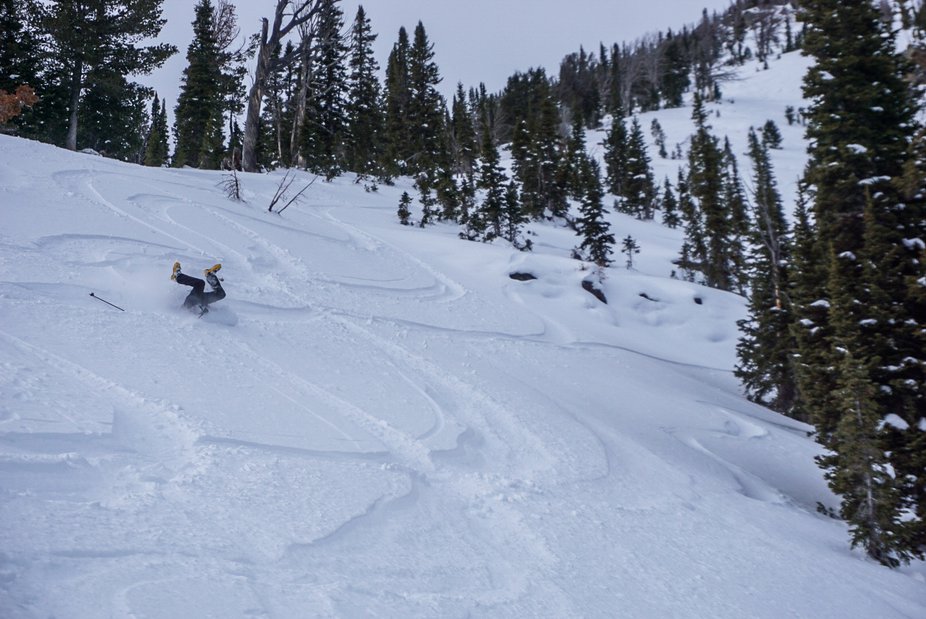
Dan was very upfront about his recent transition from snowboarding to skiing, so we chose an objective where this was ok.
Finally, it’s a really good idea to ski your touring gear inbounds before you take it into the backcountry. Touring boots flex and fit differently, touring bindings don’t release as consistently, often people buy ultralight touring skis that turn in a really strange fashion compared to the twin tips we’re used to. Figure out how to ski your touring setup confidently inbounds. Spin lift laps in your touring gear. Learn how it reacts differently in different snow conditions. Nobody wants to watch you figure out how to ski directional skis for the first time when you’re deep in the backcountry with the threat of death hanging over you. It won’t be as fun as skiing your normal inbounds gear but trust me, it’s worth it.
The “Who”
So, you’ve put it on your calendar “Go get backcountry experience,” you’re headed to the resort to skin some laps, but what sorts of people should you be looking for to accompany you on this journey? Well, there are a few options. Folks with about the same experience level as you make for good initial partners. You can go stumble around the skin track at about the same pace, making the same mistakes, and learning together. When you’re just working out the kinks inbounds, these types of people are great partners. But, at some point, you’re going to need to learn from faster, more experienced people.
Ideally, you can find a mentor in your friend group who’s willing to take you out for a few tours and show you the ropes. When you’re at this stage, it’s important to be hyper-aware of your role as a liability, not an asset. Whenever we’re planning a day in the backcountry, we’re dealing with a myriad of factors, from snow conditions to line choice, to the pace the group can travel at. And if you just bought your first set of skins, you’ll have an impact on all of those choices. So don’t invite yourself on some cool mission that more experienced skiers are going on. Instead have a conversation about what the objectives of a day of touring will be, and what you’ll need to be able to do to work within the group. If you get the feeling, at all, that other folks aren’t comfortable with your experience level, feel free to bow out and try again on a mellower day. It’s never worth getting in over your head and endangering the group.
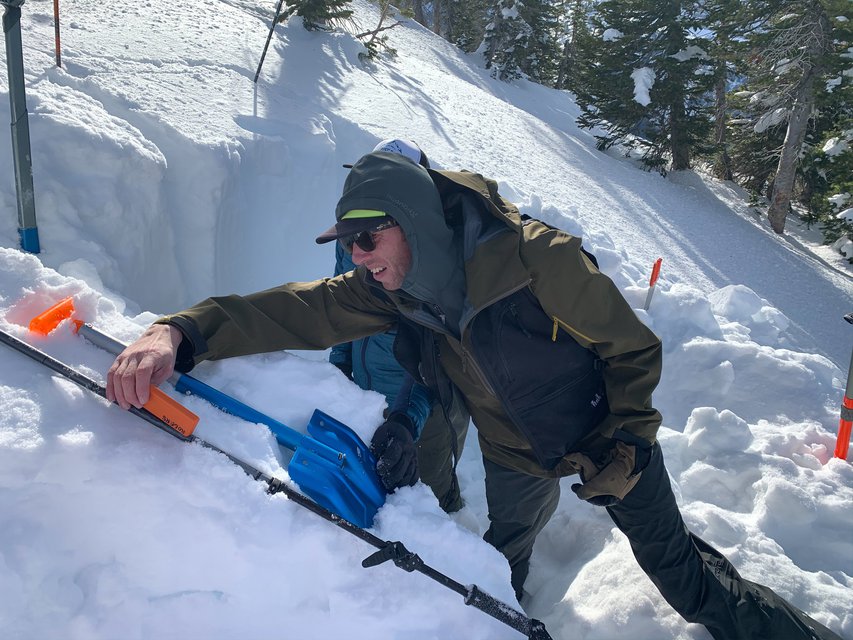
A good mentor will be able to invite you on days that push and challenge you, but don’t put anyone at risk. We all know you want to ski the Grand someday, but invitations to bigger objectives are earned on lower-key tours.
Another asset that folks often overlook is the mountain guides and avalanche educators in their area. Even if you can’t afford a guided day in the backcountry, you can still pay a guide for their time to give you beta and route information. Guides are a whole wealth of knowledge. Just asking them stupid questions that require long answers is a waste of their time, and for guides, time talking about the mountains is their income. So reach out and ask if they have a consulting rate, come into the conversation with specific questions and goals. The next best thing to skiing with a guide is skiing with a guide’s beta.
The Support Systems
Finally, as you’re out there trying to build experience, think about what support systems you have in place. You’re going to make mistakes, what can you do to make sure that you have backup to help face their repercussions?
When you’re just getting started, always choose tours that have good cell service, and that have a descent back to the car. New gear presents its challenges, and you don’t want to get stuck with a broken binding or glopping skins a few thousand feet below the car. Until you’re very comfortable with your gear, look for tours that are easy and safe to bail from.
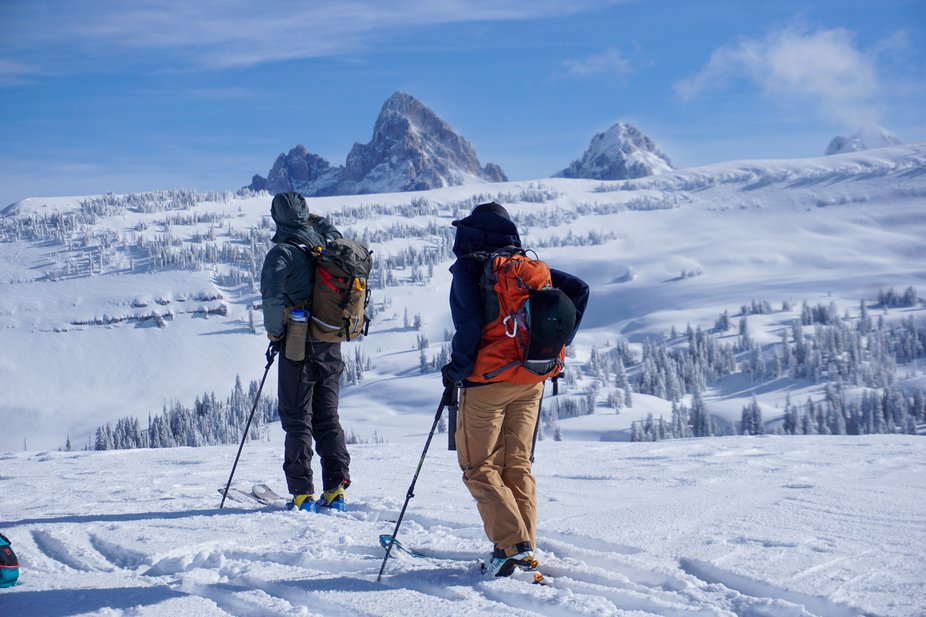
That’s part of why starting inbounds is a good idea. No matter what happens, from a broken binding, to a shattered bone, you’ve got a support system in the form of ski patrol.
Leave notes for your housemates with a description of where you’ll park, where you’ll ski, when you should be home, and who to contact if you’re late. Create safety nets for yourself. Even if you don’t use them, it’s good practice.
Staying Current
Most of us eventually have a tour where everything clicks, your route is good, the snow is great, all your gear works, and your fitness level is adequate. It’s that moment where you go “I’m getting decent at this.” But, as you find your stride backcountry skiing, it’s really important to keep yourself current. That means recurring avalanche education, staying up to date on the snow cycle, and building systems and habits to keep you safe. Right after their Avy 1 everyone is eager to do beacon checks at the start of every tour, but that can fade, we can get lazy. It’s important to not get lax.
Staying Educated
Just because you took your Avy 1 doesn’t mean you’re good to go for the next 10 years. It’s a good idea to take some kind of formal refresher at the start of every season. You can even just do this with your touring partners. Take a few days to go over what you learned in that class and practice hard skills like digging pits and doing beacon searches. Take it seriously, you have nothing to lose and everything to gain. Some avy centers will also let you audit or help instruct Avy 1 classes. That’s a great way to help them out, and stay current.
Stay Fast
Beacon searches are a skill that can deteriorate over time. The only way to stay fresh is to practice. Many resorts have beacon parks set up inbounds. Go ask patrol and they can point you toward them. You can also set up practice in any snowy field. Just track it up, and hide beacons in stuff sacks. Practice multiple burials, have a friend scream at you while you’re searching to get the adrenaline up, time yourself, make a game out of it. The faster you are, the better of a partner you are. And practice the whole routine. Build scenarios where the avalanche happens while you’re skiing, or while you’re skinning. Practice getting your beacon out, extending your probe, building your shovel. You don’t want to fumble when it matters.
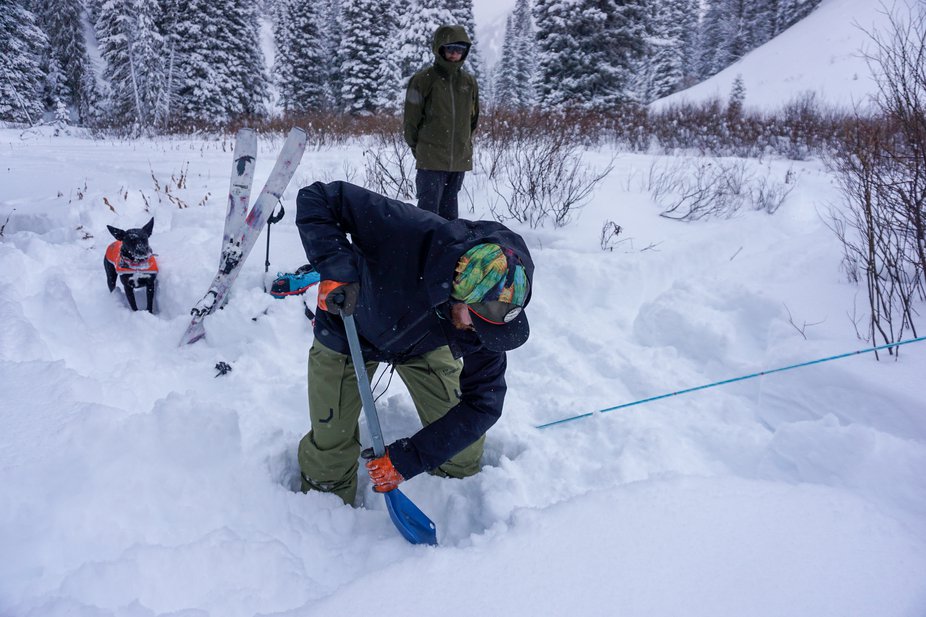
Get involved with your local avy center
These folks live, breathe, and sleep snow science. They work hard all winter to help keep all of us safe. Donate money to them. If you don’t have money, ask how you can donate time. They can all use our help, especially as they prepare for a massive influx of new backcountry users. Help them out, they help us all.
Stay Informed
This should go without saying, but read the avy report every day, not just the days you’re going skiing. I have mine set up to email me every morning. I read it before I get out of bed, every day from November through April. It doesn’t take long and it really helps understand snow trends, not just the avalanche ratings of a specific day. Look for patterns, try looking at the snow report before you read the avy report. Try to guess what the ratings will be, and what the specific hazards will be. Just reading the report is great, but to really understand it and use it to its full potential you need to start to get into the mindset of the reporter.
For the Crusty Experts
I get it, this season is going to be weird. Parking is going to suck, skin tracks are going to get set in weird places, jerries are going to boot pack or snowshoe into improbable places, and the flavor of our backcountry experience will change. That sucks. But it also presents us with opportunities. This is a great season to explore lesser-known zones, try new areas, ski the overlooked runs. This is a season to get creative.
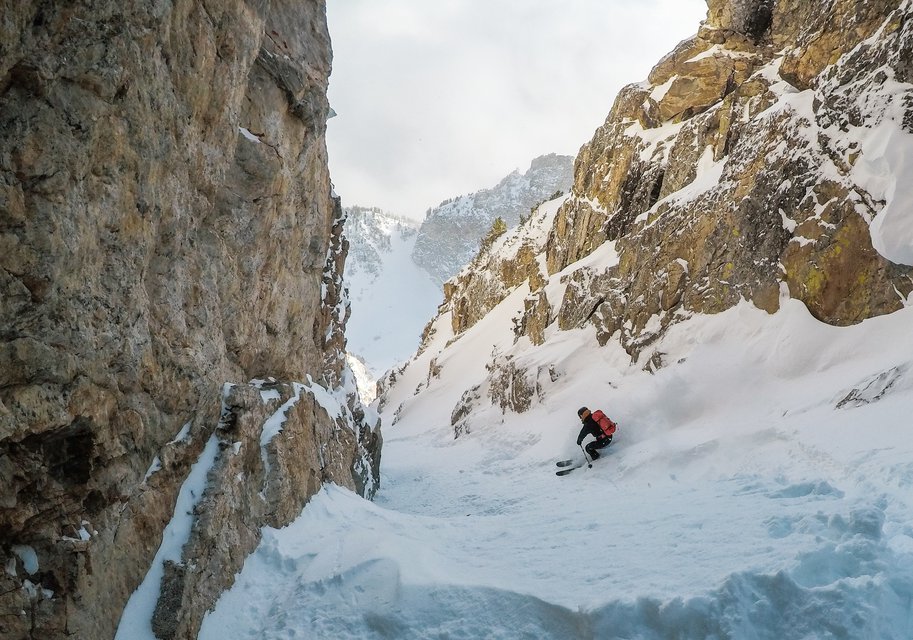
And it’s also a season to give back. Yeah. I know, everything was harder when you started and nobody coddled you. But somebody did something to set you down the path that made you the backcountry skier you are today. And this would be a great time to do that something for someone else. People are going to be doing the wrong things the wrong way in the mountains. Mentally prepare yourself now to be ready to have thoughtful conversations with them about how they’re messing up and how they can be better. Screaming at people in parking lots has never gotten us anywhere, and makes all backcountry skiers look like idiots. They’re not your mountains, it’s not your secret stash, we’re all skiing on stolen land anyway, it only makes sense to be genial stewards of it.

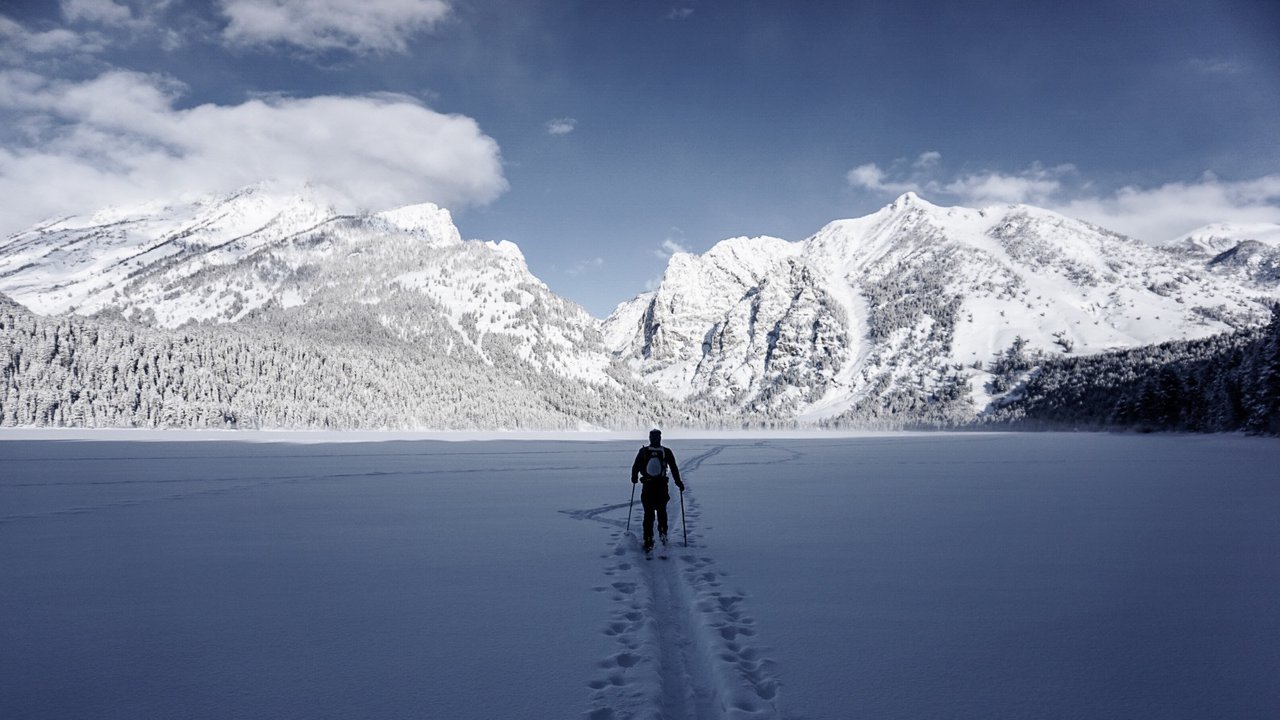
Comments